Hiroshige and Japanese art: Birds, Buddhism, and nature
Lee Jay Walker
Modern Tokyo Times
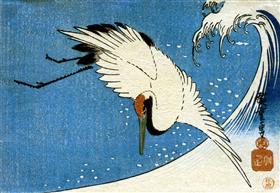
Ando Hiroshige (1797-1858) is one of the most famous Japanese artists to emanate from Japan. His art inspired European, Japanese, North American, and artists from other parts of the world. However, for the vast majority of laypeople, the diversity of his art remains unknown – from shunga sexual art to more natural areas like depicting birds.
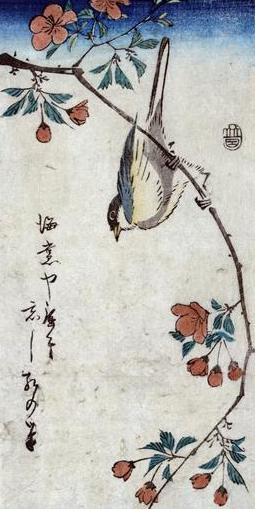
In the later stages of his life, the call of Buddhism grew louder. Thus from sexually explicit shunga to becoming a Buddhist monk mattered little concerning the culture he belonged to. Indeed, internationally Hiroshige will always be remembered for Fifty-three Stages of the Tokaido Road, the Eight Views of Lake Biwa, the Hundred Views of Edo, and other delightful landscapes – rather than shunga or becoming a Buddhist monk.
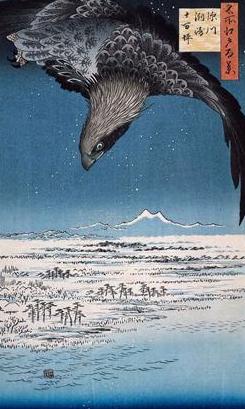
In the art piece above, the Portland Art Museum says, “Soaring high above a frozen marsh, a hawk searches for prey along the shores of Edo Bay. Far below, the snow-covered plain of Susaki stretches into the deep distance. The title of this stark winter landscape, Fukagawa Susaki and Jūmantsubo, was the name of a scenic place known for its vast open plain overlooking the sea.”
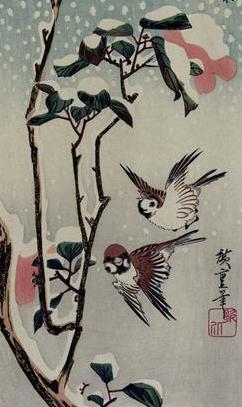
In this art piece, the emphasis is focused on birds and the delightful backdrop of nature – landscapes, single plants and flowers, and mountains. Once more, Hiroshige brings alive the subject matter in a simplistic way – but full of beauty!
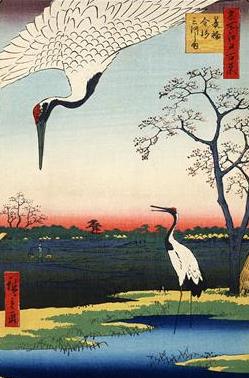
The British Museum says, “In the 1820s he was active in many areas: actor prints, warrior prints, prints of women, etc. He started producing landscape prints in the early 1830s, establishing his own unique style with the series ‘Famous Places in Edo’ (Ichiyusai signature) and ‘Fifty-three Stations of the Tokaido Highway’ of 1832-3. He continued to excel at views of famous places throughout his career and managed to express in great detail the poetic sensibility inherent in the climate and topography of Japan and the people who lived there. Hiroshige also designed many masterpieces in the genre of bird and flower prints, once again creating a world where poetry and painting combined.”

Fittingly, the Buddhist faith increasingly became a central part of his life. Thus it is easy to imagine Hiroshige reciting important holy Buddhist texts, visiting a plethora of Buddhist temples, and delving into a world that was expansive and unconstrained by time.
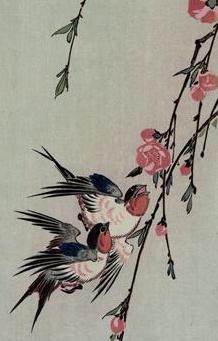
A delightful poem by Hiroshige before parting from this life read:
I leave my brush in the East,
And set forth on my journey.
I shall see the famous places in the Western Land.

PLEASE DONATE TO HELP MODERN TOKYO TIMES
Modern Tokyo News is part of the Modern Tokyo Times group
DONATIONS to SUPPORT MODERN TOKYO TIMES – please pay PayPal and DONATE to sawakoart@gmail.com
http://moderntokyotimes.com Modern Tokyo Times – International News and Japan News
http://sawakoart.com – Sawako Utsumi personal website and Modern Tokyo Times artist
https://moderntokyonews.com Modern Tokyo News – Tokyo News and International News
PLEASE JOIN ON TWITTER
https://twitter.com/MTT_News Modern Tokyo Times
PLEASE JOIN ON FACEBOOK